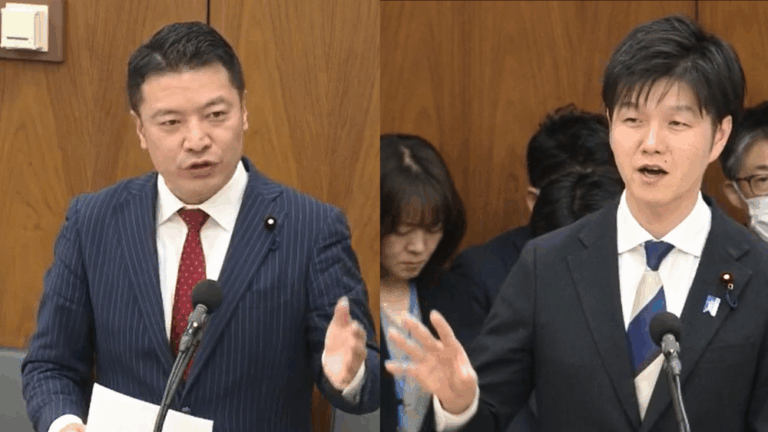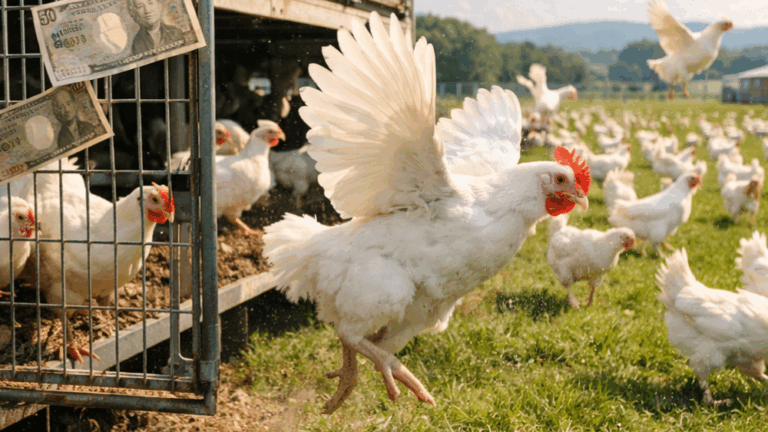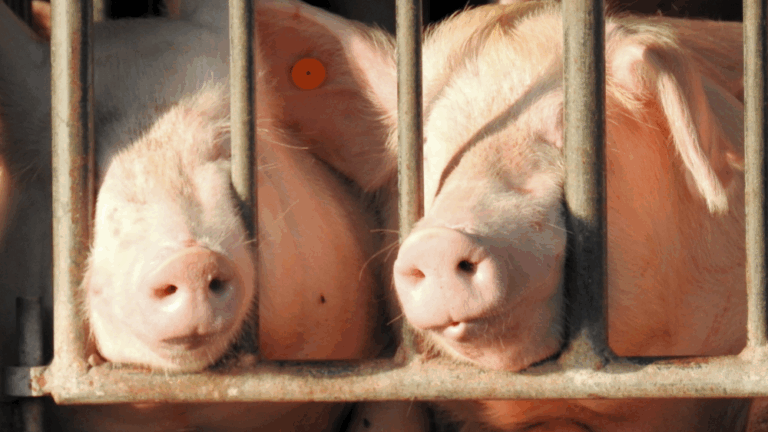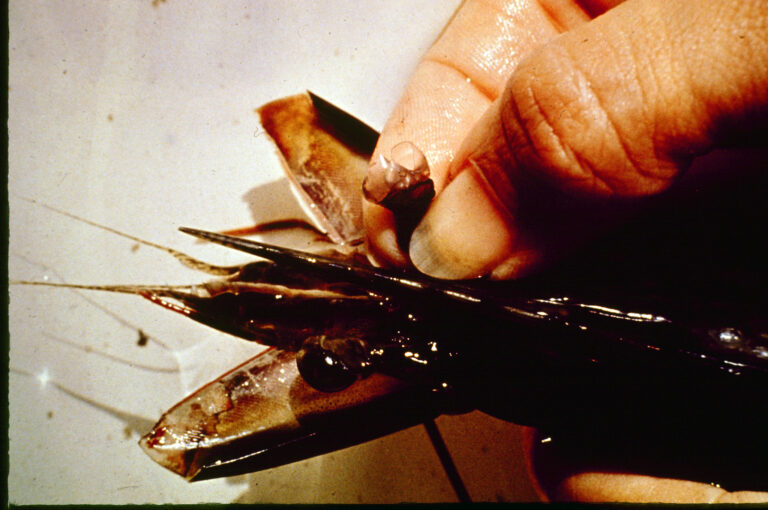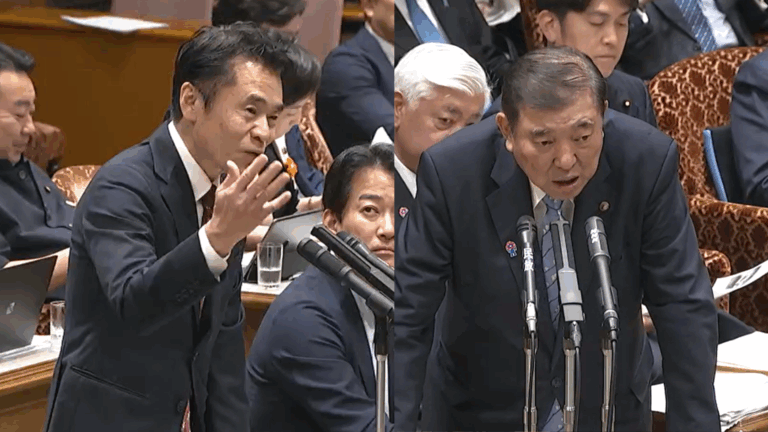From last July until January, Animal Rights Center Japan ran a #ShrimpsMatter campaign to raise awareness about shrimp eyestalk ablation. Partly to measure the effects of this campaign, we commissioned a survey at the end of July, and again with identical questions in January this year.
After briefly describing the actual practice of breeder shrimps getting one of their eyes removed in aquaculture, including videos and photos on this campaign site, we asked 12 questions:
1. Before seeing this survey, did you know that shrimps can feel suffering? 2. Had you thought that you want to know about the breeding methods and breeding environments of shrimps that you eat? 3. Did you know that in shrimp farming, eyes are getting cut off? 4. Do you feel you want to avoid shrimps from farms that cut off the eyes? 5. Did you know there exist certification labels regarding aquaculture (like MEL Marine Eco-Label Japan, ASC, etc)? 6. Have you seen certification labels like MEL or ASC at supermarkets or restaurants? 7. Do you feel you want aquaculture certification labels to include in their standards a criteria that shrimps come from farms that don’t practice eye ablation? 8. Do you want the Japanese government to promote not practicing shrimp eyes ablation to producers and retailers? 9. After reading the descriptions, did you feel you want to avoid shrimps who are farmed? 10. After reading the descriptions, did you feel you want to reduce shrimp consumption? 11. Do you feel that shrimps can feel suffering? 12. Did you think that fish can feel suffering?
From a database of over 3.5 million survey takers nationwide, we obtained responses from 2,934 men and women ages 15 and over.
The results are summarized in the table below (different from the above order, but in an easy-to-read order).


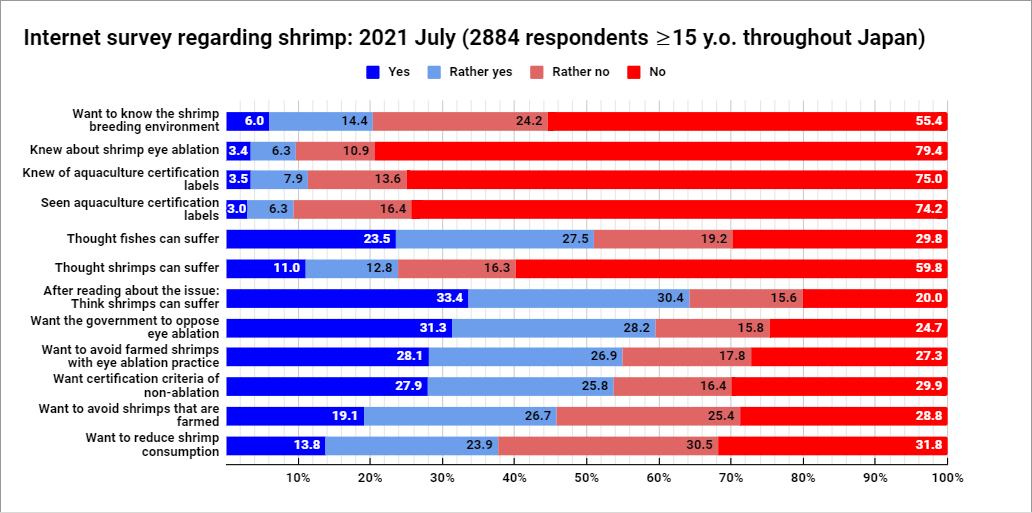
Including “rather yes” responses, the awareness of eyestalk ablation increased from 9.7% to 11.8%, and the awareness of shrimp’s ability to suffer increased from 23.8% to 25.8%.
These were what we wanted to communicate the most with this campaign, and the awareness of both increased by 2%. While uncertain how much was due to the campaign, 2% of Japan’s population equates to nearly 3 million people.
When comparing generations, the awareness was higher among younger people.
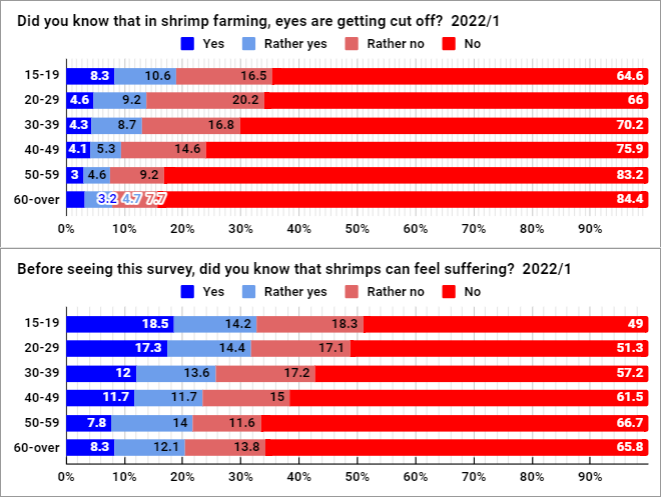
However, the number of people who newly realized shrimps can feel suffering after seeing the descriptions in the survey increased by about 5%. This likely indicates that roughly that many more people didn’t read the descriptions carefully compared to the first survey. This likely contributed to the decreased number of positive responses for questions leading to solutions (#4/7/8/9/10 — the bottom 5 questions in the first graph).
Also, the trend that the younger generations have less desire to solve the issue, despite higher awareness levels, remains as in the previous survey.
Raising awareness is of course important, but it’s probably also important to stress at the same time the impact of one’s individual choices and behaviors for improving the situation.
[Survey sponsor] Certified nonprofit organization Animal Rights Center Japan [Survey period] 2022/1/14-16 [Valid responses] 2934 [Survey method] Internet survey (using internet monitors by a general surveying company) [Survey participants] Among the 3.5 million+ internet monitors, male and female 15 years old and above throughout Japan
The cost of this survey was covered by a grant from Compassion in World Farming International.



